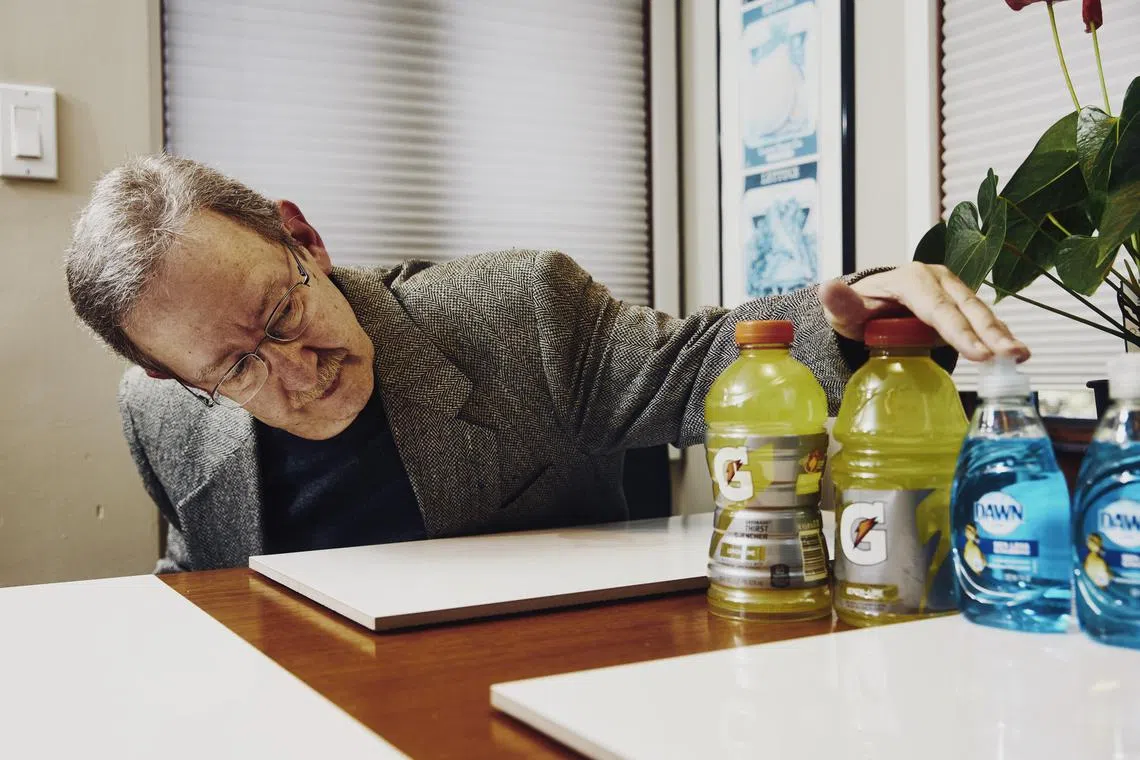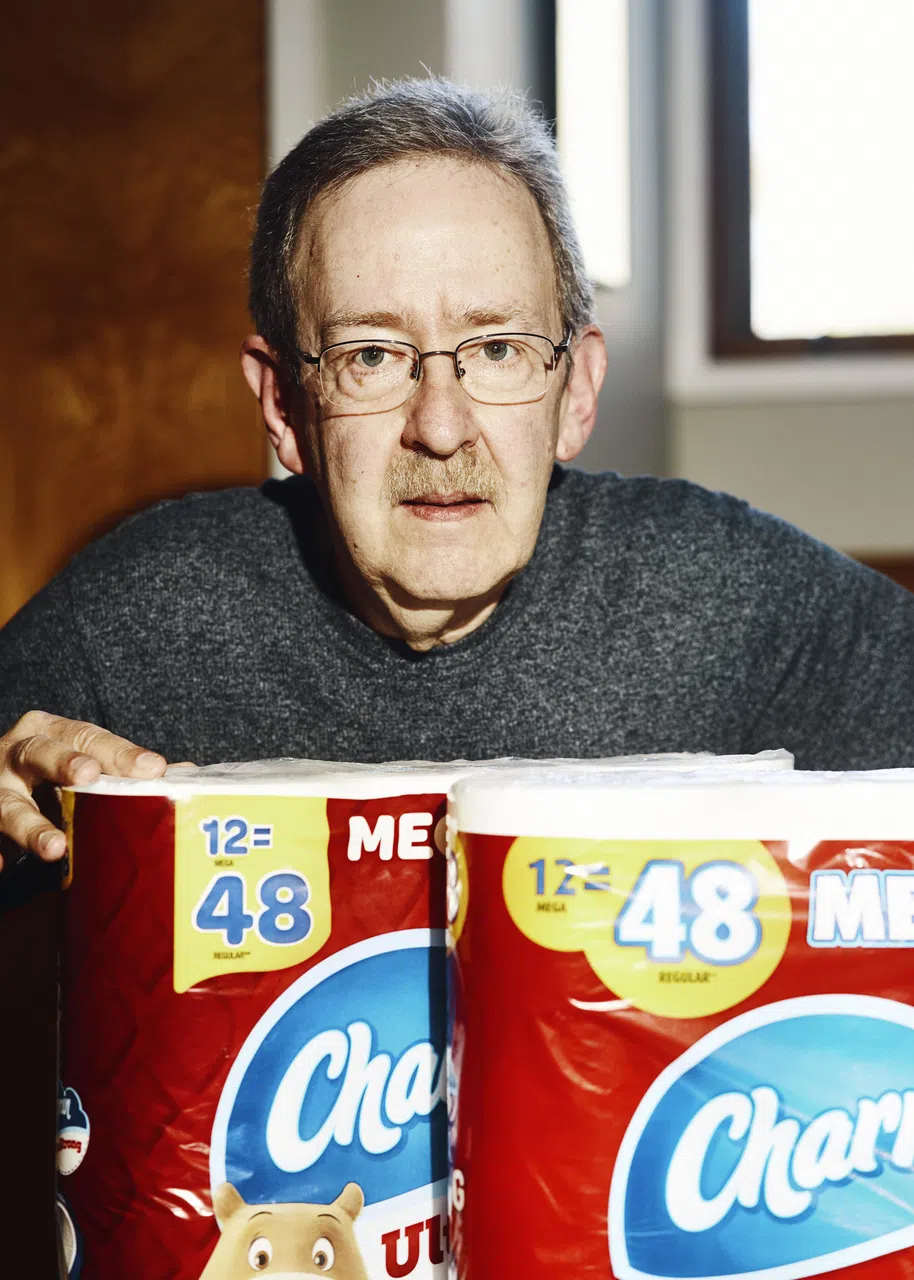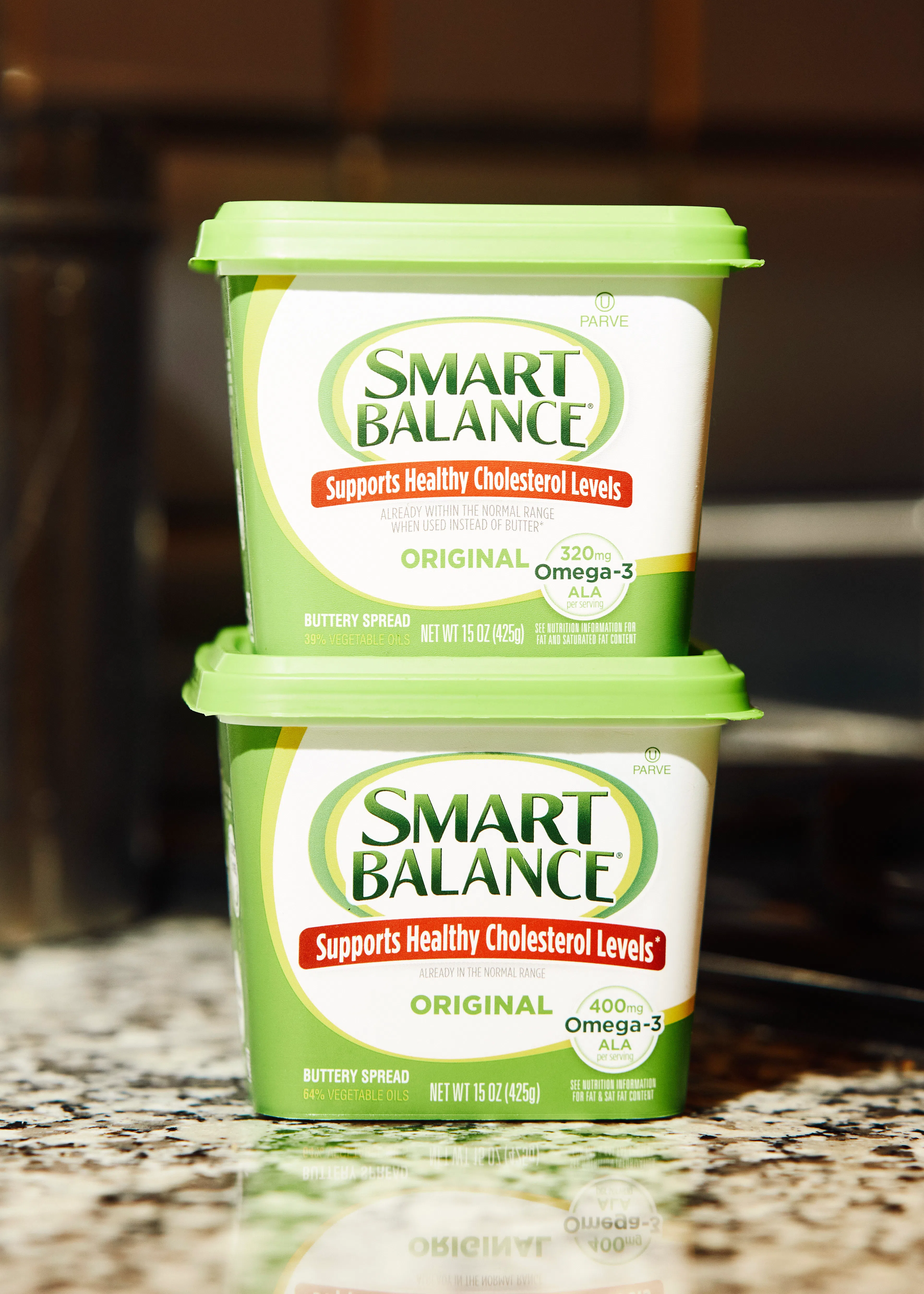Meet the US man on a mission to expose sneaky price increases
Sign up now: Get ST's newsletters delivered to your inbox

Mr Edgar Dworsky has become the go-to expert on “shrinkflation”, when products are manipulated so people get less for their money.
PHOTO: NYTIMES
Follow topic:
SOMERVILLE, Massachusetts – A few weeks ago, Edgar Dworsky got a promising tip by email. “Diluted cough syrup”, read the message, accompanied by a photo of two packages of syrup with a curious difference: The new one appeared to be half the strength of the old one.
Mr Dworsky gets emails like this frequently, alerting him to things like a bag of dog food that discreetly shrank from 50 pounds (22.68kg) to 44 pounds. A cereal box that switched from “giant” to “family” size and grew about an inch taller – but a few ounces lighter. Bottles of detergent that look the same, but the newer ones come with less detergent.
The cough syrup message looked intriguing. Mr Dworsky made plans to investigate.
He has dedicated much of his life to exposing what is one of the sneakier tricks in the modern consumer economy: “shrinkflation”, when products or packaging are subtly manipulated so that a person pays the same price, or even slightly more, for something but gets less of it.
Consumer product companies have been using this strategy for decades. And their nemesis, Mr Dworsky, has been following it for decades. He writes up his discoveries on his website, mouseprint.org, a reference to the fine print often found on product packaging. Print so tiny “only a mouse could read”, he says.
He writes about shrinkflation in everything – tuna, mayonnaise, ice cream, deodorant, dish soap – alongside other consumer advocacy work on topics like misleading advertising, class-action lawsuits and exaggerated sale claims.
One recent Mouse Print report explored toilet paper shrinkflation. “Virtually every brand of toilet paper has been downsized over the years,” Mr Dworsky wrote, documenting more than a decade of toilet paper shrinkage.
Mr Dworsky, 71, is a semi-retired lawyer whose career began as a market researcher before he briefly became an on-air consumer reporter for local television alongside a young Bill O’Reilly, the former Fox News personality. Mr Dworsky was “one of the most sincere broadcasters I’ve ever seen”, O’Reilly said recently, adding that Mr Dworsky “wasn’t one of those slick broadcasters trying to sell something”.
At the height of his career, he worked with the Massachusetts attorney general’s office, on his way to becoming a self-employed consumer advocate and possibly the world’s foremost expert on shrinkflation.
Lately, Mr Dworsky has had his work cut out for him. With inflation at a 40-year high, business owners have been increasingly shrinkflating their products in an attempt to hide price increases.
Companies are doing it out of necessity, said Krishnakumar Davey, president of consumer product goods at IRI, a market research company. “Manufacturers are facing huge costs,” he said, referring to the price of raw ingredients, labour and shipping. “They’re trying to figure out how to balance that.”
Mr Dworsky works seven days a week from his modest, three-bedroom condo in Somerville, where he lives alone. But for him, thrift is more than a job, it’s a lifestyle. He made less than US$7,000 (S$9,630) last year, mostly from donations and ad revenue. He gets by on Social Security, his state pension and savings.
He’s quick with one-line zingers about his own frugality: I preach what I practice. Splurge isn’t a word in my vocabulary. People go duck hunting or deer hunting. I’m bargain hunting!

Mr Edgar Dworsky works seven days a week from his modest, three-bedroom condo in Somerville
PHOTO: NYTIMES
One recent Thursday, Dworsky started his day at 4.45am with breakfast of a store-bought coffee cake muffin and a glass of apple juice before checking his email and scanning the web for consumer news to include in his newsletter and his other website, Consumer World.
Then he turned his attention to shrinkflation. Already that day, he had two television interviews lined up to discuss the downsizing of Halloween candy.
In interviews, he’s the same person he is off-camera: simultaneously goofy and serious, affable yet awkward. Mr Dworsky ran through the details of his candy investigations, pointing out that some manufacturers have defended smaller products by saying they have fewer calories. But on Halloween, kids don’t care, he said. “They just want some good candy.”
With inflation rattling the nation, shrinkflation recently drew the attention of television host John Oliver, who noted Mr Dworsky’s quirky TV presence. “News outlets love to cover this, usually with the help of what seems to be the one go-to expert on the topic,” Mr Oliver said, rolling clips of Mr Dworsky emphatically listing examples of downsized products like toothpaste and sports drinks.
“Yeah! You tell ’em, Ed!” Mr Oliver says. “I love everything about that man.”
Other examples Mr Dworsky has recently noted include Dawn dish soap, which lost half an ounce (about 15ml) from one of its bottle sizes, and the Smart Balance spread, which was reformulated with less vegetable oil. Procter & Gamble, which makes Dawn, did not respond to requests for comment. The maker of Smart Balance said the company had modified some products “to make them easier to spread” but would revert to the earlier formula based on consumer feedback.

Smart Balance with differing amounts of vegetable oils at Mr Edgar Dworsky’s home.
PHOTO: NYTIMES
Mr Dworsky’s work has received notice in academic circles as well. Joseph Balagtas, a professor of agricultural economics at Purdue University who has studied shrinkflation, said Mr Dworsky was the only person he was aware of who is documenting the phenomenon. Hitendra Chaturvedi, a supply chain management professor at Arizona State University, said he had turned to Dworsky’s examples to build the data sets for his own research.
It’s difficult to catch shrinkflation, Mr Dworsky said. But if he’s lucky, he can find examples in stores when new inventory arrives, putting newer and older packages on the same shelf side-by-side.
Mr Dworsky also looks out for clues like “New and improved” on packaging. But most importantly, he examines the weight.
“Look at the products you buy all the time, note what the net weight is,” he said. “When you go back to the store, double check that it’s still the same as your last bag, box or bottle.”
But the case of the cough syrup would be even trickier to investigate, he said, because it’s a possible case of what he calls skimpflation. He would need to examine whether the contents were, in effect, watered down – changing the formulation so that people were paying the same for fewer doses of cough syrup. The tipster had sent in images from a supermarket-brand, similar to Robitussin DM, showing that the adult dose had doubled to 20ml for the new bottle, from 10ml for the old.
Mr Dworsky wondered if other stores’ versions had done the same. He spent nearly two hours visiting five different drugstore chains. He was hoping to find both new and old products at the same pharmacies, to catch them red-handed.
Mr Dworsky is accustomed to being a bit of an outsider. He said he had inherited what he called the “cheap gene” from his father and recalled a childhood spending weekends at his dad’s, playing with his favourite toy, a cardboard supermarket. He’d sit inside and bag up mini boxes of cereal and oatmeal.
He spent much of his career in consumer education for the Massachusetts Office of Consumer Affairs and Business Regulation and as an assistant attorney general in consumer protection.
His boss at the time, Robert Sherman, remembered Mr Dworsky walking into his office in the early 1990s with two packages of deodorant. “What do you see?” he recalled Mr Dworsky asking.
Sherman thought the two packages were exactly the same. But no. “This one has more than the other one, the difference is the size of the cap,” Mr Dworsky said.
Of course, manufacturers are free to change their product sizes at will. But Mr Dworsky put together an office news release, wanting to spread the word to shoppers that they should look out for sneaky price increases.
It was the birth of his professional focus on shrinkflation.
His interest in cough syrup continued into November with more research. He plans to reveal his findings on Mouse Print, but in an interview he said he believed it was a case where Robitussin had changed its formula several years ago and its store-brand competitors had just recently followed.
A spokeswoman for Haleon, the manufacturer of Robitussin, said “While we continually innovate our formulations to meet the evolving needs of consumers, the quality and integrity of our products is always paramount.”
Mr Dworsky worries that consumer advocacy is a dying profession, and gets frustrated at how hard it is to uncover these examples. “There’s kind of almost a resignation that these are so difficult to find,” he said. “It takes someone with an eagle eye.”
But he’s celebrating his cough-syrup findings. “It’s an absolute high,” he said. “I hit gold!” NYTIMES

